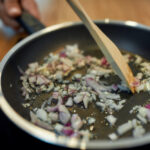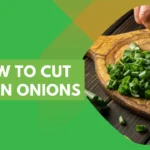Are you ready to elevate your culinary skills and add a burst of rich, sweet flavor to your dishes? Look no further than the delightful world of caramelized onions. Whether you’re a seasoned chef or an aspiring home cook, learning how to make caramelized onions is an essential skill that will transform your meals. In this comprehensive guide, we will walk you through the step-by-step process of achieving perfectly caramelized onions every time, unlocking a world of savory possibilities for your cooking endeavors.
What Are Caramelized Onions?
Caramelized onions are onions that have been cooked slowly over low heat until they become soft, sweet, and golden brown. This process involves breaking down the natural sugars in the onions, resulting in a rich and flavorful taste. Caramelized onions are commonly used as a topping or ingredient in various dishes, adding depth and complexity to the overall flavor profile.
Ingredients Needed For Caramelized Onions
To make caramelized onions, you will need onions, butter or oil, salt, and optionally sugar or balsamic vinegar. Start by thinly slicing the onions and heating the butter or oil in a skillet over medium heat. Add the onions and sprinkle with salt.
Step-by-step Instructions On How To Make Caramelized Onions
Making caramelized onions is a simple yet time-consuming process that requires patience and attention to detail. Follow these step-by-step instructions to achieve perfectly caramelized onions:

Step 1: Gather the Ingredients
To make caramelized onions, you will need the following ingredients:
- 2 large onions (yellow or red)
- 2 tablespoons of butter or oil (olive oil or vegetable oil works well)
- Salt and pepper to taste (optional)
Step 2: Prepare the Onions
Start by peeling the onions and cutting off both ends. Then, slice the onions thinly. You can either cut them into half-moons or dice them, depending on your preference.
Step 3: Heat the Pan
Choose a wide, heavy-bottomed pan or skillet that can accommodate all the onion slices in a single layer. Place it over medium heat and add the butter or oil. Allow it to melt and heat up.
Step 4: Add the Onions
Once the butter or oil is hot, add the sliced onions to the pan. Stir them gently to coat them evenly with the fat. Spread them out in an even layer across the pan.
Step 5: Cook on Low Heat
Reduce the heat to low, as caramelizing onions requires slow cooking over low heat. This allows the natural sugars in the onions to slowly break down and caramelize without burning.
Step 6: Stir Occasionally
Let the onions cook undisturbed for about 5 minutes to allow them to soften slightly. Then, stir them occasionally using a wooden spoon or spatula. This helps prevent sticking and ensures even cooking.
Step 7: Continue Cooking
Continue cooking the onions over low heat for approximately 30-40 minutes, stirring occasionally. As they cook, they will gradually turn golden brown and develop a sweet, rich flavor.
Step 8: Adjust Heat if Necessary
If you notice the onions are browning too quickly or sticking to the pan, reduce the heat slightly. Caramelization is a slow process, and it’s important to maintain a gentle heat to avoid burning.
Step 9: Season with Salt and Pepper
About halfway through the cooking process, you can season the onions with salt and pepper if desired. This step is optional but can enhance the flavor of the caramelized onions.
Step 10: Test for Doneness
After around 30 minutes:
- Start testing the onions for doneness
- Take a small piece and taste it. The onions should be soft, sweet, and have a deep golden brown color
- If they are not yet caramelized to your liking, continue cooking for a few more minutes
Step 11: Remove from Heat
Once the onions have reached your desired level of caramelization, remove the pan from heat. Be careful, as the pan will still be hot.
Step 12: Serve or Store
Caramelized onions can be used in various dishes or enjoyed on their own. They make delicious toppings for burgers, pizzas, sandwiches, or salads. You can also store them in an airtight container in the refrigerator for up to a week.
5 Tips And Tricks For Perfect Caramelized Onions
Here are 5 tips and tricks for perfect caramelized onions:
- Thinly sliced onions will cook more evenly and caramelize faster.
- A wide pan allows for better heat distribution, and a heavy-bottomed pan helps prevent burning.
- Caramelizing onions takes time and patience. Cooking them on low heat allows the natural sugars to slowly caramelize without burning.
- Salt helps draw out moisture from the onions, aiding in the caramelization process.
- While it’s important not to constantly stir the onions, giving them an occasional stir helps prevent sticking and ensures even cooking.
2 Variations And Uses Of Caramelized Onions
Caramelized onions are a versatile ingredient that can add depth and sweetness to a wide range of dishes. They are made by slowly cooking onions over low heat until they become soft, brown, and sweet. Here are three variations and uses of caramelized onions:
Traditional Caramelized Onions:
Traditional caramelized onions are made by cooking sliced onions in butter or oil over low heat for an extended period, usually around 30-45 minutes. The slow cooking process allows the natural sugars in the onions to caramelize, resulting in a rich and sweet flavor. These caramelized onions can be used in various ways:
- Topping for Burgers and Sandwiches: Add a spoonful of caramelized onions to your favorite burger or sandwich for an extra burst of flavor. The sweetness of the onions pairs well with savory meats and cheeses.
- Pizza Topping: Sprinkle caramelized onions on top of your homemade or store-bought pizza for a delicious twist. They add a subtle sweetness that complements the other toppings.
- Pasta Sauce: Blend caramelized onions into a tomato-based pasta sauce for added depth and complexity. The sweetness of the onions balances out the acidity of the tomatoes.
Balsamic Caramelized Onions:
Balsamic caramelized onions are made by adding balsamic vinegar to the traditional caramelization process. The vinegar adds a tangy and slightly sweet flavor to the onions, enhancing their overall taste. Here are some uses for balsamic caramelized onions:
- Salad Topping: Sprinkle balsamic caramelized onions on top of salads for an extra burst of flavor. They pair well with greens, goat cheese, and nuts.
- Bruschetta: Spread balsamic caramelized onions on toasted baguette slices as a base for bruschetta toppings. The combination of flavors creates a delicious appetizer or snack.
- Cheese Pairing: Serve balsamic caramelized onions alongside a cheese platter. The sweet and tangy flavor of the onions complements various types of cheeses.
Conclusion
In conclusion, caramelized onions are a delicious and versatile addition to any dish. By following this step-by-step guide, you can easily achieve perfectly caramelized onions every time.
Explore More Onions Topics
- How To Cut Onions For Kabobs?
- How To Cut Green Onions
- Onion Powder Vs. Onion Salt: What Is The Difference?
- How To Cut Onions For Fajitas
- How To Cut Onions For Burger?
- How Long Do Cut Onions Last?
- Benefits of Drinking Onion Water
- How to cut onion into wedges
- Ultimate Guide on How to Store a Cut Onion
- How To Cut Onion Without Crying
- How To Cut An Onion Into Rings
- Benefits of Onion Juice
- How to Chop an Onion
Frequently Asked Questions (FAQ’s)
What Is The Trick To Caramelizing Onions Quickly?
The trick to caramelizing onions quickly is to cook them over high heat with a small amount of oil, stirring frequently until they turn golden brown and sweet.
Do You Caramelize Onions With Butter Or Olive Oil?
Caramelizing onions can be done with either butter or olive oil, depending on personal preference and desired flavor profile.
Do You Need To Add Sugar To Caramelize Onions?
No, you do not need to add sugar to caramelize onions. The natural sugars present in the onions are sufficient for the caramelization process.
What Is The Difference Between Caramelized And Sauteed Onions?
Caramelized onions are cooked slowly over low heat until they turn golden brown and develop a sweet, rich flavor. In contrast, sautéed onions are cooked quickly over high heat until they become translucent and slightly browned.


![What is an Onion Julienne Cut - [Benefits, Tips and Methods] onion Julienne Cut](https://juicerhunter.com/wp-content/uploads/2023/09/onion-Julienne-Cut-juicer-hunter-150x150.webp)



